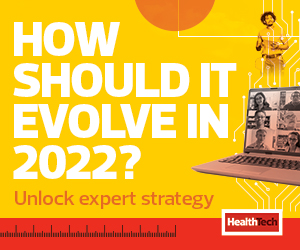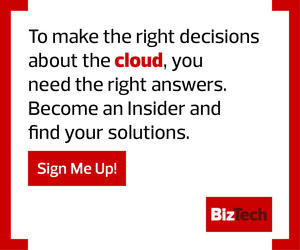Personal Experiences with Tech Inform the Professional
“Now, let's just think about what happened in the last few years with work from home for those people who could work from home. You had this this almost bleeding of what people did personally into what they did for work,” Sood continued.
People experienced new and innovative technology in their personal lives throughout the pandemic. Sood cited several examples of behaviors that shifted as a result of the pandemic. People were unable to go to the gym, so they switched to emerging companies like Peloton for their fitness needs. Companies like Instacart and Amazon changed the way that we shopped. And then, you had all the digital platforms for communication — Zoom, FaceTime, Microsoft Teams — which became primary ways that people connected with each other.
“So, you had millions and millions of workers at home interacting with these systems throughout the day, and then they would flip to their corporate systems, and it would be clunky and unusable. And you would have highly utilitarian designs, where you had tools that look like they were from a different age,” he explained.
“What we're seeing now is this shift of what employee sentiments are and what their expectations are for the systems that they interact with. Work, whether it's an HR system, whether it's an internal go-to-market system, a sales system, interacting with their IT departments, this notion of how do you make these systems focused around the user? How do you make it work for them? How do you make the design intuitive and beautiful and easy to use? It's something that we're going to see as a continuing trend, only accelerated within the IT environment,” he predicted.
Incorporating Emotional Design into IT Plans
When attempting to place the user at the center of IT strategy, Sood mentioned the concept of emotional design. As he explained it, “things that are well designed, that are beautiful, that have kind of an artistic touch but are highly functional, help people accomplish complex tasks much more efficiently than if you had just a utilitarian tool.”
“This notion of usability is really important,” he continued. He singled out Apple and Tesla as examples of companies that have been able to marry intelligent hardware and software with some more aesthetic design elements. “They have really intelligent engineers, but they also have very talented designers who can think about everything from the color of pixels that make up a button all the way to how buttons are placed and the ergonomics and the sounds and the messages.”
Ultimately, he said, if you have things that have real deliberate design in them, and people look at them and understand how they work, and it puts them in a good headspace, it will make them more able to accomplish complex tasks. Finding innovative ways to collaborate in hybrid work environments can enable more successful collaboration, which will be key in the coming year. Sood said he thinks technologies that enhance collaboration “are going to be really interesting in how they play out this whole notion of that return to work and what the new normal is. I think it’s going to be one of the biggest challenges we face, but one of the areas where there's going be quite a bit of innovation that's going to leverage what we've learned over the last two years. But we’re going to learn more as we see more people coming back to the office.”













